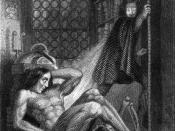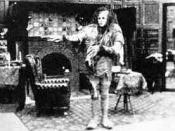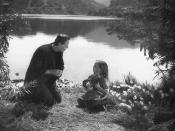3 Unit English - Mary Shelly's Frankenstein
"One productive way of thinking about the Gothic genre is in terms of the way it stages a confrontation with the elements of the monstrous within our ordinary social experience. What, in your opinion, is the significance of this confrontation with the monstrous and of the way the monstrous is embodied in Frankenstein?"
In Mary Shelly's Frankenstein, there are many confrontations with the elements of the monstrous. Monstrosity is a theme that pervades the entire novel, as the hideous 'Monster' lies at the heart of it. This confrontation with the monstrous is indeed very significant as it makes us aware of the monstrous or irrational within or around us and shocks out of how we normally think and view the world around us. It is through the monstrous our eyes are opened and it enable us to consider our place on the earth and our actions.
The significance of the confrontation with the elements of the monstrous and of the way the monstrous is embodied in Frankenstein shall be explored in the essay below.
Monstrosity can be defined as "shockingly hideous or frightful, deviating greatly from the normal in appearance or structure; abnormal" or as "having the qualities of a monster; deviating greatly from the natural form or character; abnormal; as, a monstrous birth" as defined by John Locke. The monstrous is used in Frankenstein to emphasise the "nightmarish terrors that lie beneath the controlled and ordered surface of the conscious mind." The monster himself is grotesquely ugly, and is shunned by society and by his creator, Victor Frankenstein. This can be seen when the monster says to Victor:
"am I not alone, miserably alone? You, my creator abhor me; what hope can I gather from your fellow creatures, who owe...



Comment
This is an interesting essay, and I think you have a point, but it is a bit hard to follow and sometimes your language is grammatically incorrect (for example, at one place you must have forgottten to use punctuation, because it does not make sense at all). Also, you should state the pagenumber after every quote you use (you only did that once, I think).
0 out of 0 people found this comment useful.